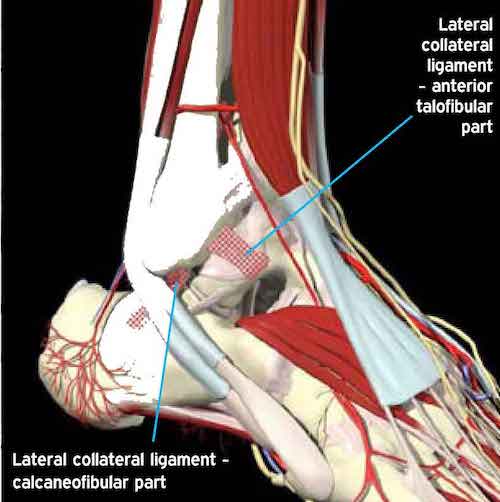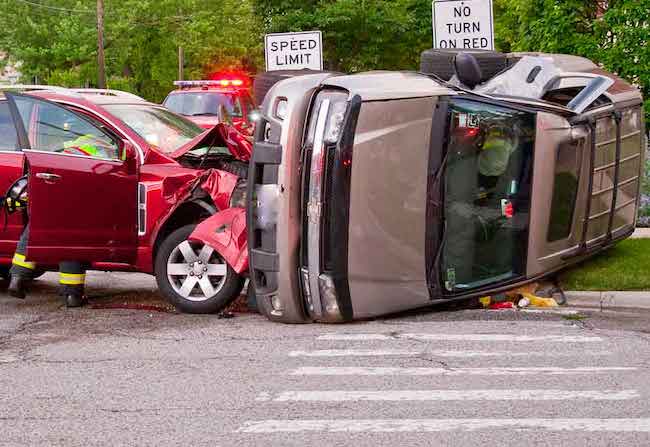Auto Accident Ankle Injury Lawyer in Dallas
 If looking for an ankle injury accident lawyer call (972) 599 4100. We will start working on your case immediately. Attorney Doug Goyen has represented people injured in auto accident injuries since 1997. The Law Office of Doug Goyen has settled thousands of car accident cases for millions of dollars for our clients. Our personal injury attorneys provide aggressive, experienced, and powerful representation for our clients. You can count on us to get the compensation you deserve for your case.
If looking for an ankle injury accident lawyer call (972) 599 4100. We will start working on your case immediately. Attorney Doug Goyen has represented people injured in auto accident injuries since 1997. The Law Office of Doug Goyen has settled thousands of car accident cases for millions of dollars for our clients. Our personal injury attorneys provide aggressive, experienced, and powerful representation for our clients. You can count on us to get the compensation you deserve for your case.
Call For A Free Case Review (972) 599 4100
TYPES OF TRAUMATIC ANKLE INJURIES CAUSED IN AUTO ACCIDENTSNobody chooses to be injured or in pain. If someone causes harm to another person due to negligence, the injured person should be compensated for the injury caused. Ankle injuries are serious injuries that can be caused by auto accidents. If you are looking for an ankle injury accident lawyer from an auto accident, you need a Dallas car crash attorney to get the compensation you deserve in your case. Call us at (972) 599 4100 so we can get started on your case today.
Call For A Free Case Review (972) 599 4100
SERIOUS ANKLE INJURIES CAUSED BY THE TRAUMA OF AUTO ACCIDENTSAchilles tendon ruptures. What Exactly Is the Achilles Tendon? A tendon is a tissue band that connects a muscle to a bone. The Achilles tendon connects the calf muscle to the heel bone and runs down the back of the lower leg. The Achilles tendon, also known as the heel cord, aids in walking by lifting the heel off the ground.
An Achilles tendon rupture is a complete or partial tear caused by stretching the tendon beyond its capacity. Forceful jumping or pivoting, as well as sudden accelerations of running, can cause the tendon to overstretch and tear. A tendon injury can also occur as a result of tripping or falling.
The Achilles tendon can be injured in a variety of ways, including a minor car accident in which the foot is braced on a brake during impact.
 Lateral ankle sprains. Lateral ankle sprains are also known as inversion or supination ankle sprains. The complex of ligaments on the lateral side of the ankle is torn to varying degrees as a result of a forced plantarflexion or inversion movement. Although an ankle sprain is a relatively minor injury, inadequate rehabilitation can result in post-sprain symptoms. The prevalence of complications and the breadth of long-term symptoms following an ankle sprain have led to the suggestion of a diagnosis of sprained ankle syndrome.
Lateral ankle sprains. Lateral ankle sprains are also known as inversion or supination ankle sprains. The complex of ligaments on the lateral side of the ankle is torn to varying degrees as a result of a forced plantarflexion or inversion movement. Although an ankle sprain is a relatively minor injury, inadequate rehabilitation can result in post-sprain symptoms. The prevalence of complications and the breadth of long-term symptoms following an ankle sprain have led to the suggestion of a diagnosis of sprained ankle syndrome.
Individuals who sustain multiple repetitive ankle sprains have been reported to have functional and mechanical instability, as well as an increased risk of re-injury. It is also important to avoid overlooking the less common causes of ankle pain, which include small fractures around the ankle and foot (e.g., Pott’s fracture) and straining or rupture of the muscles surrounding the ankle (e.g. calf, peroneii, tibialis anterior).
Auto accidents are one of the many ways that lateral ankle sprains can occur.
Peroneal tendon ruptures. Peroneal tendon injuries affect the tough bands of tissue that connect muscles to bones in the foot. Each foot has two peroneal tendons that run parallel to each other behind the outer ankle bone. One peroneal tendon attaches to the midfoot’s exterior side via the smallest toe, while the other runs beneath the foot and attaches close to the arch’s inside. The peroneal tendons act as a stabilizing force in the foot and ankle while bearing weight, protecting them from sprains and other injuries.
Auto accidents are one of the various types of trauma that can cause Peroneal tendon ruptures.
Anterior tibialis anterior tendon rupture. The tibialis anterior tendon connects a muscle in your shin to the front of your foot. A tear in this tendon can cause pain and make normal activities like walking and running difficult. If you suddenly felt pain in the front of your ankle and are having difficulty moving your foot normally, you may have suffered a painful injury known as a tibialis anterior tendon rupture.
The tibialis anterior muscle arises from the front of the tibia, or shin bone. It runs down your shin and becomes a tendon that connects to the top inner portion of your foot. Its name is derived from its location—tibialis, which means “tibia,” and anterior, which means “in front.” The anterior tibialis muscle’s function is to dorsiflex your foot and ankle, which is the action of pulling your foot and toes up towards the front of your shin. When you walk, the tibialis anterior contracts to lift your foot and toes off the ground. The muscle also pulls your toes and foot inwards, a movement known as inversion.
 Although a tibialis anterior rupture is a relatively uncommon injury, it is the third most common lower extremity tendon tear after the Achilles and patellar tendons. Typically, the injury is caused by a traumatic event in which your foot and ankle are forcefully pulled down and outwards. This causes the tendon to tear because it is stretched to its maximum length.
Although a tibialis anterior rupture is a relatively uncommon injury, it is the third most common lower extremity tendon tear after the Achilles and patellar tendons. Typically, the injury is caused by a traumatic event in which your foot and ankle are forcefully pulled down and outwards. This causes the tendon to tear because it is stretched to its maximum length.
Call For A Free Case Review (972) 599 4100
TYPES OF FRACTURES TO THE ANKLE FROM TRAUMA IN AUTO ACCIDENTS- Lateral malleolus fracture. Ankle fractures of this type are the most common. It is a lateral malleolus break, which is the knobby bump on the outside of the ankle (in the lower portion of the fibula).
- Bimalleolar ankle fracture. This is the second most common type, and it involves breaks in both the lateral and medial malleolus, the knobby bump on the inside of the ankle (in the lower portion of the tibia).
- Trimalleolar ankle fracture. Breaks in three sides of the ankle are involved in this type: the medial malleolus of the tibia, as well as the lateral malleolus and posterior malleolus (in the lower portion of the fibula).
- Pilon fracture (also called a plafond fracture). This is a fracture through the ankle’s weight-bearing “roof” (the central portion of the lower tibia). This is usually a high-energy traumatic injury caused by a fall from a great height.
- Maisonneuve fracture. Maisonneuve fracture is a combination of a proximal fibula fracture and an unstable ankle injury (widened ankle mortise on x-ray), which frequently includes ligamentous injury (distal tibiofibular syndesmosis, deltoid ligament) and/or fracture of the medial malleolus. It is caused by a mechanism of pronation-external rotation.
- Displaced fractures v. Non displaced fractures. Nondisplaced fractures occur when bones are broken but remain in their original position and alignment. Displaced fractures occur when fractured bone fragments are separated or misaligned. The treatment will be based on fracture alignment and ankle stability.
Call For A Free Case Review (972) 599 4100
FREE CASE REVIEWSIf you or someone you know needs the assistance of a personal injury lawyer in Dallas for an injury case call (972) 599 4100 for a free consultation and a free strategy session regarding your case. The strategy session includes a summary of your case, identification of the legal issues involved with your case, and identifying those legal issues that will help maximize your recovery in your case. We will email a copy of this strategy session to you for you to keep. Call us today.
DIRECTIONS TO OUR OFFICE:Law Office of Doug Goyen
15851 Dallas Pkwy #605
Addison, Texas 75001
(972) 599 4100 phone
(972) 398 2629 fax
Take the North Dallas Tollway. You will come to the Keller Springs exit. Exit at Keller Springs and pass Keller Springs – staying on the service road, get on the southbound service road. The 2nd building on your right is the Madison Business Center. We are located on the 6th floor of the Madison Business Center.
By Doug Goyen, douggoyen@goyenlaw.com
Related Dallas Motor Vehicle Accident Pages:
- Car Wreck Attorney
- Bicycle Accident Lawyer
- DWI Accident Lawyer
- Dram Shop Lawyer
- Motorcycle Accident Lawyer
- Pedestrian Accident Lawyer
- Truck Accident Lawyer
- Wrongful Death Lawyer
Related Personal Injury Pages:
- Construction Accident Injury Lawyer
- Dog Bite Lawyer
- Injury Attorney
- Premises Liability Lawyer
- Workplace Injury Lawyer
Related Injuries in Accidents Pages:
- Common injuries caused by accidents
- Catastrophic Injury
- Brain Trauma
- Spinal Cord Injury
- Burn Injuries
- Internal Organ Injury
- Adrenal Injury
- Back Injuries
- Neck Injuries
- Bulging Discs and Herniated Discs
- Anterolisthesis Defined
- Cervical Radiculopathy
- Soft Tissue Injury
- Whiplash Injury
- Chest Injury
- Pelvis & Hip Injury
- Leg Injury
- Knee Injury
- Torn ACL Knee Injury
- Collateral Ligament Knee Injury
- Ankle Injury
- Foot Injury
- Facial Injury
- Eye Injury
- Orbital Fracture
- Detached Retina
- PVD Eye Injury
- Eye Floater Injury
- Shoulder Injury
- Rotator Cuff Injury
- Arm Injury
- Wrist Injury
- Hand Injury
- Acute Injury Defined
- Amnestic Defined
- Post-Traumatic Arthritis
- Different Types of Fractures
- Concussions
 Doug Goyen Home
Doug Goyen Home











